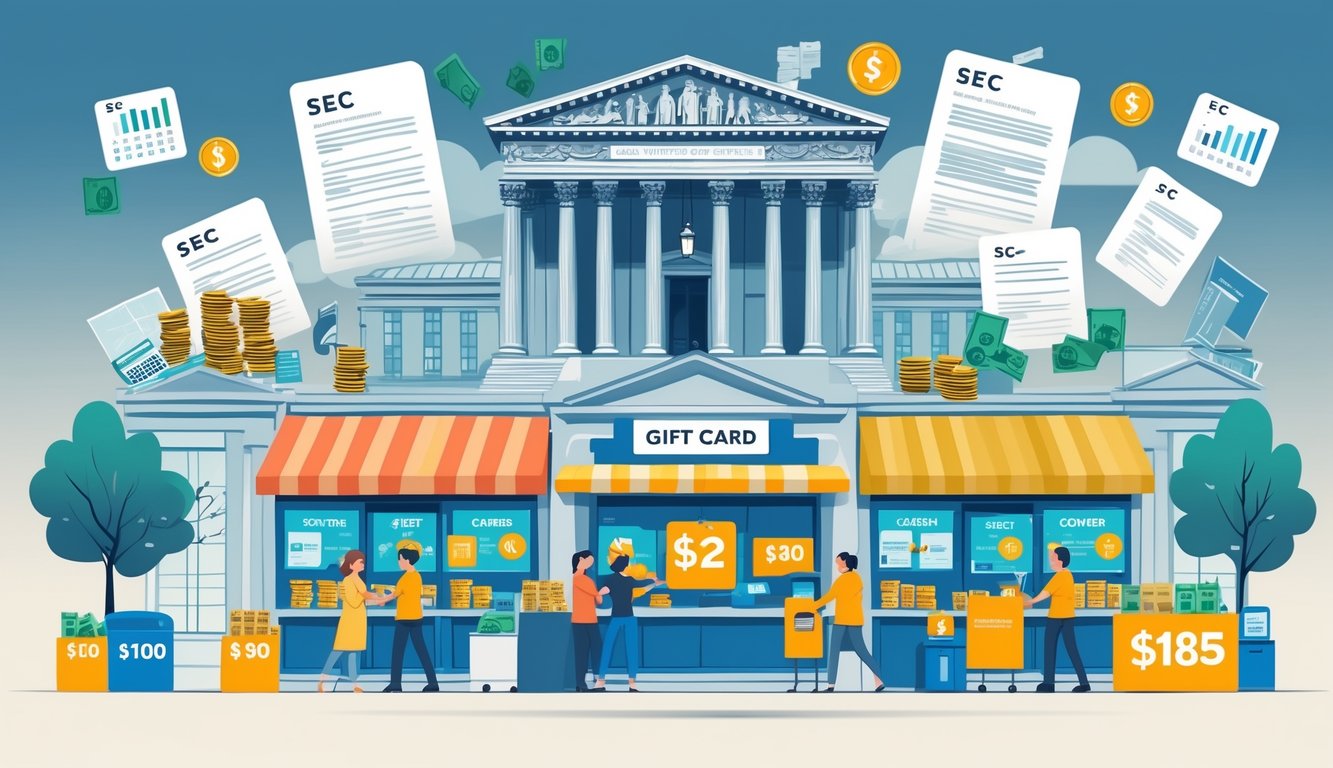
Understanding Breakage and Unused Gift Cards
Trying to make sense of the gift card mess just gets more confusing. Every time I clean out my desk, I find another lost card—money just sitting there, doing nothing. And apparently, everyone else is in the same boat. Unused balances don’t just sit; they’re padding some retailer’s bottom line while I’m still searching for that $25 Cheesecake Factory card from 2021.
What Is Breakage?
Forget the fancy terms: breakage is just money retailers get because you forgot to use your card. Picture a $50 Macy’s card buried in a drawer—if you never touch it, Macy’s eventually gets to keep every dollar. Retailers actually count on people forgetting. Bankrate says 47% of Americans have at least one unused card, with an average of $187 just sitting around. That’s a lot of unbought coffee.
And get this: companies write breakage into their reports as “free” revenue. Sometimes they even guess how much breakage they’ll get in a year. No one tells you that a chunk of every gift card is expected to go unspent. I’ve heard accounting teams use the same math as insurance companies to predict who’ll forget their cards.
Why Consumers Leave Gift Cards Unused
People don’t leave cards unused for fun. It’s lost cards, weird stores, odd amounts (“thanks for the $7.02, Grandma”), and the horror of juggling five cards at checkout. There’s also “menu paralysis”—like, you get a fast food card but never actually eat there.
Expiration dates used to be brutal, and even though the CARD Act (2010) helped, it’s still confusing. Some cards get eaten by fees, or you just forget. Who’s tracking down a $5 balance at a random gas station? Not me. Retail insiders say the end-of-year pileup is a goldmine of abandoned credits and promo cards.
Financial Impact of Unused Gift Cards
We’re not talking pocket change—Americans left over $45 billion in unused gift cards between 2005 and 2015 (don’t blame my math, blame the industry). Retailers love breakage because it quietly bumps up profits without selling anything new. Some analysts even say breakage helps stores beat earnings forecasts.
Take a mall chain: selling gift cards is basically a free loan from customers. For every $100 you think you’re gifting, $15 or $20 might just disappear into the store’s books. Sometimes the state gets the money through “escheatment,” but good luck claiming it. So yeah, every untouched Target or Best Buy card in your kitchen drawer is just more cash for the store, not for you or whoever you meant to treat. My junk drawer? Just a tiny drip in a billion-dollar river.
Legal Framework: SEC Regulations and Expiration Rules

Honestly, it’s wild how retailers keep finding ways around the rules. Regulations are everywhere—SEC wants transparency, the CARD Act is just a wall of legal mumbo-jumbo nobody reads, and expiration dates sneak up on you. One day you’re sure you have $18 left, the next it’s just gone at midnight. Still not sure why I keep buying these things, but here we are.
Federal Laws Affecting Gift Cards
So, the Credit Card Accountability Responsibility and Disclosure (CARD) Act of 2009—ugh, I still can’t say that full name without rolling my eyes—set this five-year bare minimum for gift card expiration. If you’re like me and have a Starbucks card fossilizing in your junk drawer, at least you know it’s not supposed to just disappear on you. But get this: Federal Reserve Board claims there was over $21 billion in unused gift card money floating around in 2023. $21 billion. That’s not just a few lost cards under the sofa.
And no, these laws don’t actually kill off inactivity fees; they just shove them down the road a bit. Wait a year without using your card and, surprise, you can get hit with monthly fees—assuming, of course, you even noticed the microscopic disclosure on the packaging. I swear, one time I almost lost a Best Buy card to “non-use” fees because I never saw the fine print. Who actually reads those inserts? Not me.
Retail gift cards (Target, Amazon, whatever) and bank-issued ones (Visa, Mastercard—those) get tangled up in slightly different rules. Banks slap on more regulations, including the Electronic Fund Transfer Act. The FTC likes to say there are “consumer protections,” but honestly, state laws get the final word, and it totally depends where you shop. Sometimes you’re protected, sometimes you’re just out of luck.
SEC Guidelines for Retailers
“Breakage.” Wall Street types get way too excited about this word. It’s just unused gift card money that stores keep, and they report it as deferred revenue until—poof—it becomes profit. SEC’s Accounting Standards Codification (ASC 606) forces companies to track redemption rates and historical non-use, which means someone’s stuck with endless spreadsheets, guessing how much will never get spent. Sounds like a party.
Public companies have to disclose their breakage estimates in revenue notes, but honestly, who’s reading those unless you’re an accountant? Sometimes, leftover balances go to state escheat funds, but every state does its own thing. I once sat through an audit where nobody could agree if breakage should hit gross or net income. Try explaining that to your family at Thanksgiving. No one cares.
Side note: my cousin thinks “escheat” means getting ripped off by a sketchy gift card site. I mean, he’s not totally wrong—good luck tracing a missing balance.